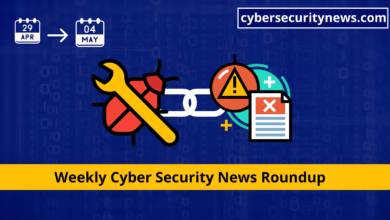Cyber security and artificial intelligence — business value and risk

In the current era of digitalization, cybersecurity has become a topmost priority for businesses, regardless of their size and nature. With the growing dependence on digital infrastructure and data, safeguarding against cyber threats has become crucial to ensure uninterrupted business operations. However, the evolving nature of cyberattacks poses significant challenges for traditional security measures.
This is where Artificial Intelligence (AI) emerges as a game-changer, offering substantial benefits and inherent risks in cybersecurity.
Business Value of AI in cybersecurity
AI has revolutionized cybersecurity by augmenting traditional security measures with advanced capabilities to detect, prevent, and respond to cyber threats. Let’s delve into the significant business value AI brings to cybersecurity:
1. Enhanced Threat Detection and Prevention:
Artificial Intelligence (AI) powered security solutions have transformed how businesses handle security threats. These solutions effectively analyze significant network traffic, user activity logs, and real-time security event data. Unlike traditional rule-based systems, AI can identify subtle patterns and correlations indicative of potential threats, including Distributed Denial-of-Service (DDoS) attacks or insider threats.
AI-powered security solutions leverage sophisticated algorithms to process and analyze vast volumes of data, thereby identifying and predicting potential cyber threats in real time. By proactively hunting for vulnerabilities and predicting attack vectors, AI empowers businesses to stay one step ahead of cybercriminals. AI can also help companies identify and prioritize security risks, enabling them to allocate resources effectively to mitigate them.
2. Improved Operational Efficiency:
As the volume and complexity of cyber threats continue to increase, organizations are turning to AI-powered automation to help their security teams keep up with digital transformation. By automating routine security tasks, AI-powered automation frees human security specialists to focus on more strategic initiatives, such as identifying emerging threats and developing new security protocols to stay ahead of the curve.
One of the biggest benefits of AI-driven automation is its ability to streamline incident response procedures. When a cyberattack occurs, every second counts, and the faster an organization can respond, the less downtime and financial impact it will experience. By automating incident response procedures, organizations can minimize the time it takes to detect and respond to a cyberattack, reducing the risk of data loss and other negative consequences.
In addition to improving incident response times, AI-driven automation optimizes security operations by identifying patterns and anomalies in network traffic and detecting potential threats before they become full-blown attacks. This helps organizations allocate their security resources more effectively, maximizing the return on investment in security teams.
AI-powered automation is critical for organizations looking to stay competitive and secure in today’s fast-paced digital landscape. By leveraging AI, organizations can stay ahead of the curve, reduce the risk of cyber attacks, and protect their valuable data and assets from potential threats.
3. Proactive Incident Response and Recovery:
In the unfortunate event of a cyberattack, it is essential to respond quickly and effectively to minimize damages. Fortunately, AI technology can significantly expedite the incident response process. By analyzing data from the compromised systems, AI can quickly identify the extent of the attack and help contain it. Additionally, AI can help with forensics and root cause analysis, enabling businesses to gain insights into how the breach occurred and implement preventive measures to avoid future attacks. AI in cybersecurity can help businesses avoid potential threats and protect their valuable assets.
Risks of AI in Cybersecurity
As AI becomes increasingly integrated into cybersecurity, organizations must be aware of its potential risks. While AI can revolutionize cybersecurity by identifying and mitigating threats more efficiently than ever, it can also introduce new vulnerabilities if not implemented properly. Organizations must address these risks and take appropriate measures to ensure that AI is utilized safely and effectively in their cybersecurity strategies.
1. Vulnerabilities in AI Systems:
Artificial intelligence (AI) technology has made remarkable progress in recent years but poses potential security risks. Cybercriminals can exploit weaknesses in AI algorithms or training data to manipulate security defenses and launch complex cyberattacks. As a result, organizations must prioritize the security of AI models. This can be achieved by implementing secure coding practices and robust access controls to reduce the risk of exploitation by malicious actors. Businesses can protect their systems against cyber threats and data breaches by taking proactive measures to secure AI models.
2. Bias and Discrimination:
It is important to note that AI algorithms can sometimes exhibit biases in the data used for their training. This can lead to discriminatory outcomes in security decisions, resulting in unfair profiling or misidentifying legitimate activities as malicious. Organizations should use diverse and unbiased training datasets to minimize such biases. Additionally, it is recommended that they implement processes to identify and mitigate potential biases in AI-powered security solutions. By doing so, they can ensure that their security systems are fair and free from any unintended biases.
3. Lack of Transparency:
The use of Artificial Intelligence in cybersecurity has been a boon for organizations, but the need for more transparency in AI decision-making has raised concerns about trust and accountability. Often, users need to comprehend the reasoning behind AI-generated security alerts, leading to skepticism and doubt. To address this issue, Explainable AI (XAI) has been developed to enhance transparency in AI decision-making. However, organizations need to prioritize the development of interpretable AI models for security applications, enabling users to comprehend the rationale behind AI-generated security alerts and provide mechanisms to appeal decisions.
Balancing Business Value and Risk
It is important to balance the business value of AI and the associated risks. It is recommended that organizations adopt a balanced approach to ensure that they derive maximum benefits from AI while minimizing potential risks. This approach must consider various factors, such as the type and volume of data being processed, the level of automation in place, and the potential impact of AI on the organization’s overall security posture. By adopting a balanced approach, organizations can effectively leverage AI to enhance their cybersecurity defenses while mitigating the risks of data breaches, privacy violations, and other security issues.
1. Establish Comprehensive Policies and Frameworks:
Developing comprehensive cybersecurity policies and frameworks is essential to implement AI-powered security solutions effectively and responsibly. These policies should address data security, model governance, and responsible AI development to ensure alignment with organizational objectives and regulatory requirements. Data security policies should include encryption, access controls, and monitoring. Model governance policies should ensure unbiased data and avoid perpetuating biases or discrimination. Responsible AI development policies should ensure ethical and transparent development and accountability for actions.
2. Continuously Monitor and Audit AI Models:
To ensure the reliability of AI models, it is essential to monitor and audit them continuously. This can be achieved by conducting regular vulnerability assessments and penetration testing to identify any potential security weaknesses. Additionally, it is recommended that fairness checks be implemented to mitigate biases in AI-powered security decisions. By following these steps, organizations can ensure that their AI models function efficiently and make fair and unbiased decisions.
3. Invest in Cybersecurity Expertise:
Cybersecurity has become a crucial aspect of business operations as technological advancements continue to reshape the world. Artificial Intelligence (AI) has the potential to revolutionize how organizations secure their digital assets. However, it’s essential to note that AI alone cannot guarantee complete security. To effectively leverage AI-generated security insights, it’s important to invest in cybersecurity expertise. While AI can provide valuable insights, human judgment and oversight remain crucial for interpreting security alerts and making informed decisions based on AI insights. By adopting these strategies, businesses can enhance their cybersecurity posture while mitigating the associated risks. Overall, AI and human expertise are complementary and necessary for effective cybersecurity.
Conclusion
Artificial Intelligence presents immense opportunities for enhancing cybersecurity, enabling organizations to detect threats faster, automate tasks, and improve incident response. However, it’s essential to acknowledge and address the risks associated with AI, including vulnerabilities, bias, and lack of transparency. By implementing appropriate safeguards and adopting a balanced approach, businesses can harness the full potential of AI to protect their valuable assets in today’s digital threat landscape. As AI technology evolves, it will undoubtedly play a pivotal role in the ongoing battle against cybercrime, making it an indispensable tool for businesses worldwide.
Image Credit: Wayne Williams
As the Global Information Security Officer & DPO at Model N, Chirag Shah’s primary objective is to ensure the company’s adherence to security, compliance, and privacy obligations. Chirag spearheads the development and implementation of comprehensive security strategies that harmonize with business goals and objectives. Chirag’s responsibilities encompass a broad spectrum of security programs, including security compliance management, risk management, incident response, and security awareness training. With over 24 years of experience, Chirag has successfully led and managed security, compliance, and risk management programs across diverse industries and businesses of varying sizes, ranging from small enterprises to Fortune 500 companies.



